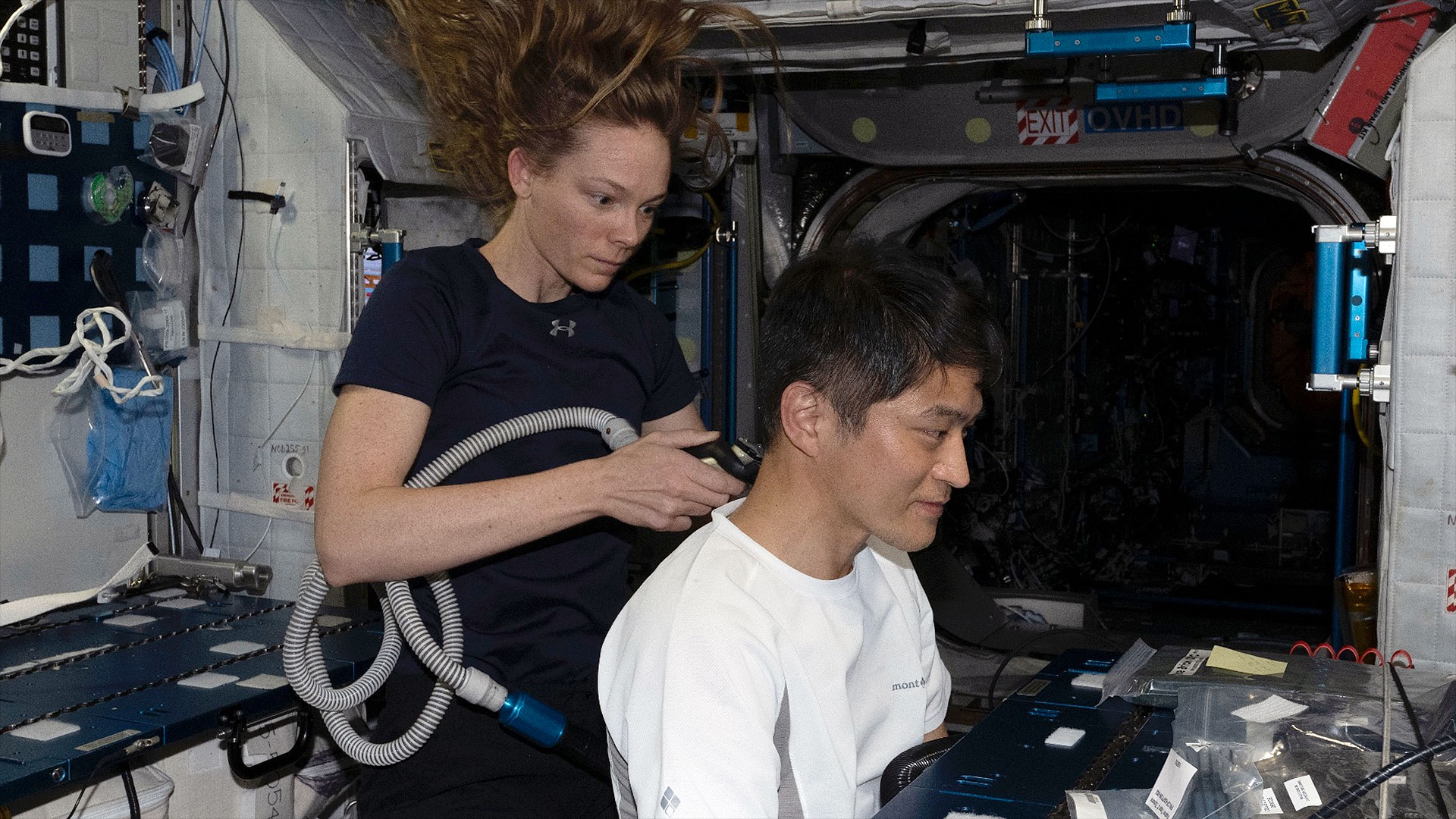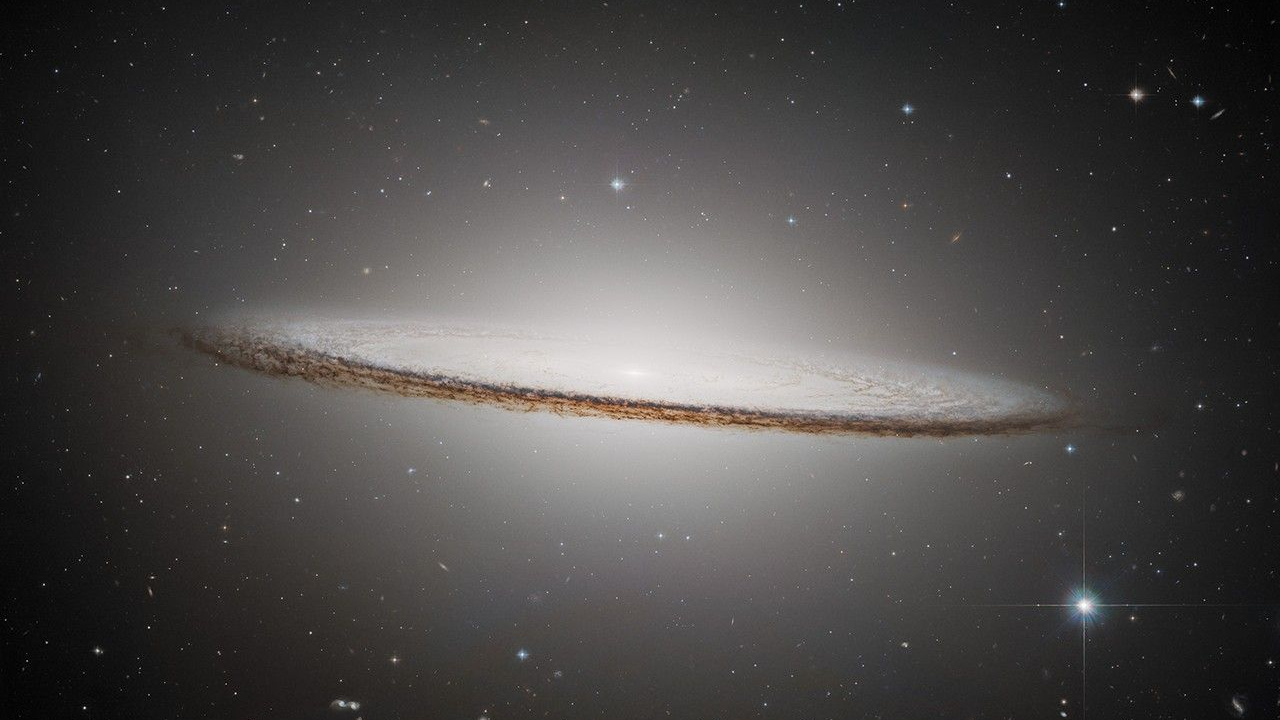Ancient star that crashed hot young star party could solve solar system mystery
By chance, astronomers saw the old cosmic interloper in a region of star formation located over 2,000 light-years away.

Astronomers have discovered an ancient stellar body gatecrashing a gathering of hot, young stars.
The interloper was found in a star-forming region located around 2,350 light-years from Earth called NGC2264. While such star intruders have been observed before, the mixing of an old star and a grouping of young stars was unexpected. This is something scientists previously thought not to happen.
These findings may one day implicate our understanding of the journeys stars take across our universe and inform us on how stellar objects form dynamic relationships with their environments. Moreover, they may also have ramifications closer to home. The possibility of older interlopers in young star systems may explain how our solar system, and particularly Earth, came to be enriched with certain isotopes of elements long ago.
"We were using the Gaia satellite to look for fast-moving stars that are ejected from star-forming regions due to encounters with other stars when we serendipitously found an 'interloping' star,'" Richard Parker, an astrophysicist at The University of Sheffield and leader of the discovery team, told Space.com. "This star had formed elsewhere but was passing through this region. We noticed that its combination of color and brightness meant that it was an evolved star — known as an Asymptotic Giant Branch (AGB) star."
Related: 'Forbidden planet' narrowly escaped becoming a snack for a dying star (video)
AGB stars are formed when stars with masses around that of the sun (or up to 8 times greater) run out of hydrogen to convert to helium in their cores, but still continue the nuclear fusion process in their outer layers. The sun will go through this stage of stellar evolution in around 5 billion years, forming a star similar to the cosmic gatecrasher the team found in NGC2264.
These "retired" AGB stars are also believed to create large quantities of radioactively unstable chemical elements, namely aluminium-26 and iron-60, which they can release to their surroundings in stellar winds.
Get the Space.com Newsletter
Breaking space news, the latest updates on rocket launches, skywatching events and more!
How the infant solar system got rich with getting destroyed
However, scientists estimate that when our solar system was in its infancy, it was already enriched with these isotopes. Not only that, but it's also believed those elements were incorporated into the planets as they formed. In the case of Earth, for instance, aluminium-26 and iron-60 may have dominated the internal heating of our planet. Thus these isotopes likely helped develop plate tectonics which now assists in sustaining a breathable atmosphere over Earth.
"This means that some process delivered aluminium-26 and iron-60 to our solar system as it was forming," Parker said.
Elements like these are also released when massive stars much larger than the sun explode at the end of their lives, therefore distributing all the isotopes they had forged during their existence. These supernova explosions were previously believed to be responsible for the solar system's early enrichment, but the caveat with this theory is such massive stars would have also produced a great deal of radiation upon detonation. In the vicinity of the infant solar system, this might've have heated gas and prevented it from clumping and forming the planets.
"It was thought that the only plausible origin of these radioactive elements was from the supernovae of massive stars that formed in the same stellar groups as stars like our sun," Parker said. "The discovery of an AGB star in a star-forming region throws the debate wide open on the origin of these chemical elements. If the 26-Aluminium and 60-Iron instead come from AGB stars, this then removes the problem of the massive stars' destructive radiation."
Parker added that because groups of young stars like NGC2264 tend to exist in relatively compact configurations, the team had considered the chances of finding an interloping old star amongst such a young stellar cluster to be quite low.
After spotting the AGB star intruder in NGC2264 using the Gaia Data Release 3 (GDR3) data release, the scientists set out to discover if it was possible the aluminium-26 and iron-60 enrichment happened in the solar system via passing AGB stars and their stellar winds rather than supernova explosions.
The team used computer simulations to calculate precisely how much of these chemical elements could be captured by our solar system when it was forming. Sure enough, they found the amounts of these isotopes captured in the model appear consistent with measured levels in the Solar System.
"Previous work conducted around 30 years ago suggested that the chances of the sun encountering an AGB star were quite low," Parker said. "We haven't done anything to change that probability, but have shown that it can happen. I was surprised by the result, but I am very pleased to bring the AGB-enrichment idea back into the literature."
Parker and the team now intend to hunt the universe for more retired stars interloping in the domain of young stars to see how common this phenomenon is.
"The Gaia instrument was crucial to finding these types of objects, but is an instrument that works in the visible light regime," Parker said. "Young star-forming regions are easier to observe at infrared wavelengths, so an infrared version of Gaia — currently on the drawing board but not yet built or launched — would be wonderful."
The team's research was published Monday (July 24) in the Astrophysical Journal Letters.
Join our Space Forums to keep talking space on the latest missions, night sky and more! And if you have a news tip, correction or comment, let us know at: community@space.com.

Robert Lea is a science journalist in the U.K. whose articles have been published in Physics World, New Scientist, Astronomy Magazine, All About Space, Newsweek and ZME Science. He also writes about science communication for Elsevier and the European Journal of Physics. Rob holds a bachelor of science degree in physics and astronomy from the U.K.’s Open University. Follow him on Twitter @sciencef1rst.









